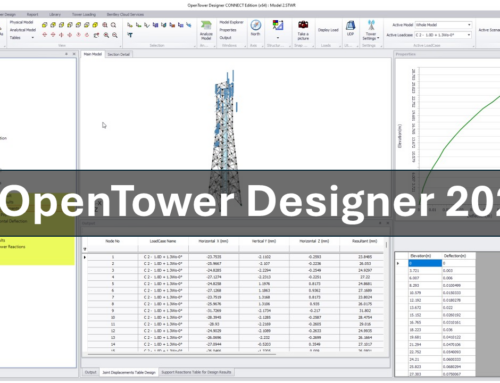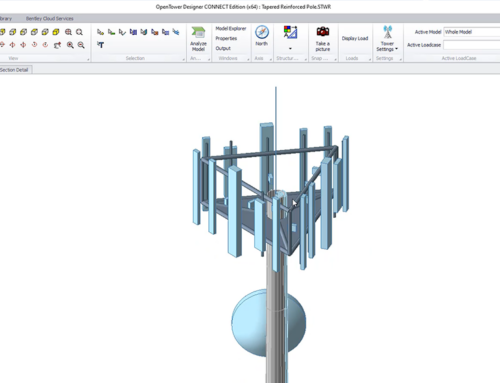Having accurate data available when you need it can make a huge difference in the realization of revenue for both carriers and tower owners. It can also improve efficiency in managing towers, especially at scale. However, the telecom tower industry is currently plagued with a lack of reliable, accessible data.
I highlighted the importance of high-fidelity data in the blog Using Automation to Expedite and Reduce Costs of 5G Rollout, but data accessibility is equally important. Accessible data is necessary for business owners who want to make informed decisions whenever necessary. It plays a critical role in advancing business success.
Not Having Centralized Tower Data Drains Time and Resources
The Telecom industry typically relies on data gathered and stored in many locations by various stakeholders, including in-house data and data coming from outsourced vendors, like inspection and engineering data. Each stakeholder often has its own choice of systems for data collection and storage in order to adhere to a certain set of established practices. Unfortunately, and sometimes unwillingly, this creates data silos.
The problem with data silos is the inaccessibility of the best available data when needed, making them unable to be used in critical tower services and business decisions. A single cell tower can have multiple data silos causing operational inefficiencies. So, what happens when you multiply that by the hundreds or thousands of towers that owners and carriers often work with? Undeniably, this data clog makes truly informed decisions almost always impossible. In other words, critical business decisions often get impaired by the inaccessibility of the best possible data.
Mergers and acquisitions (M&A) can further compound the issue. Privately stored data is often lost during the transition because those datasets were never reconciled to create the source of truth. This scenario leaves new owners in doubt about the health of the towers and the equipment installed on each of those towers. It causes significant delays in transferring the assets and invites additional but undue legal and technical challenges. In the best-case scenario, when the data is accessible and reliable, many of these silos contain unstructured data in different file formats that need to be reconciled for the next stakeholder, affecting business outcomes. With each data loss, towers become less reliable and day-to-day operations get more expensive for all stakeholders. The solution to this messy data landscape is simple and yet extremely powerful: eliminate data silos.
Creating a Single Source of Truth for Tower Data
Imagine being able to look up any bit of data about any tower in your network within minutes. That’s the reality of having tower data compiled into a single source of truth. To eliminate data silos, the telecom industry needs a system that:
- Provides a collaborative environment for all stakeholders to access the best possible data with high confidence
- Automatically updates data in a safe and secure manner
- Converts unstructured data and automatically updates asset inventory
- Preserves design revisions
- Separates data layers based on privileges and roles. For example, a carrier may not have access to another carrier’s collocated data.
OpenTower iQ does all of this and more.
Centralized Data Made Easy
With the OpenTower iQ platform, all data is collected and placed into a single cloud data repository. From aerial capture, it generates an “as-built” model which is an accurate digital representation of the physical tower as it appears on the ground. These detailed models provide an immersive graphical experience for all the stakeholders to understand, access, and decide on as-built information. The program keeps track of design changes throughout the lifecycle of a tower, providing rich context and the best possible data to the stakeholders as and when needed.
Better yet, OpenTower iQ eliminates the file reconciliation process. Through its data ingestion services, the platform can convert files of different data formats into a structured multi-tenanted database. Removing file reconciliation eliminates an outsized drain on cost and time for maintenance and operations, including engineering. Streamlining data reliability and data accessibility has another huge advantage: tower owners, service providers, and carriers can use the same high-fidelity data without changing many of their existing processes. This creates a smooth transition and doesn’t require investing heavily into retraining its workforce.
The other benefit of digitization is data sharing. Once a site is inspected, the same data can be reused for all collocated carriers. Even if there is a hesitancy in sharing data among carriers, one source of truth for a given carrier can be reused for the typical pre- and post-construction processes. For example, the square inch calculation of a leased space can be shared and used by the tower owner and the relevant carrier
Accessible, accurate data can have a tremendous impact on tower reliability, revenue assurance, accurate inventory, and agility in making informed business decisions. To find out how OpenTower iQ can make your tower data more accessible and reliable, schedule a demo today.




